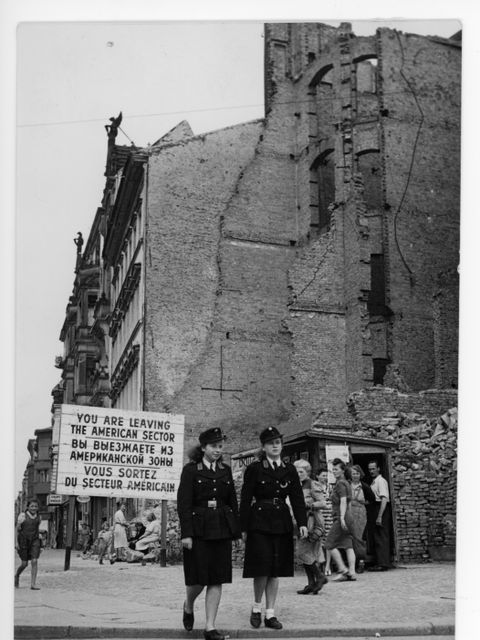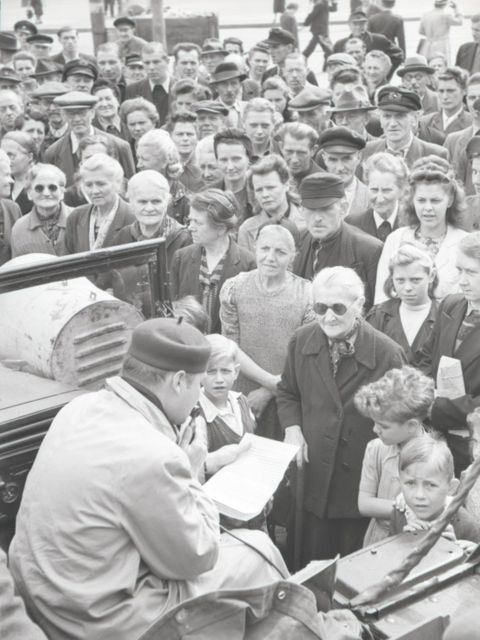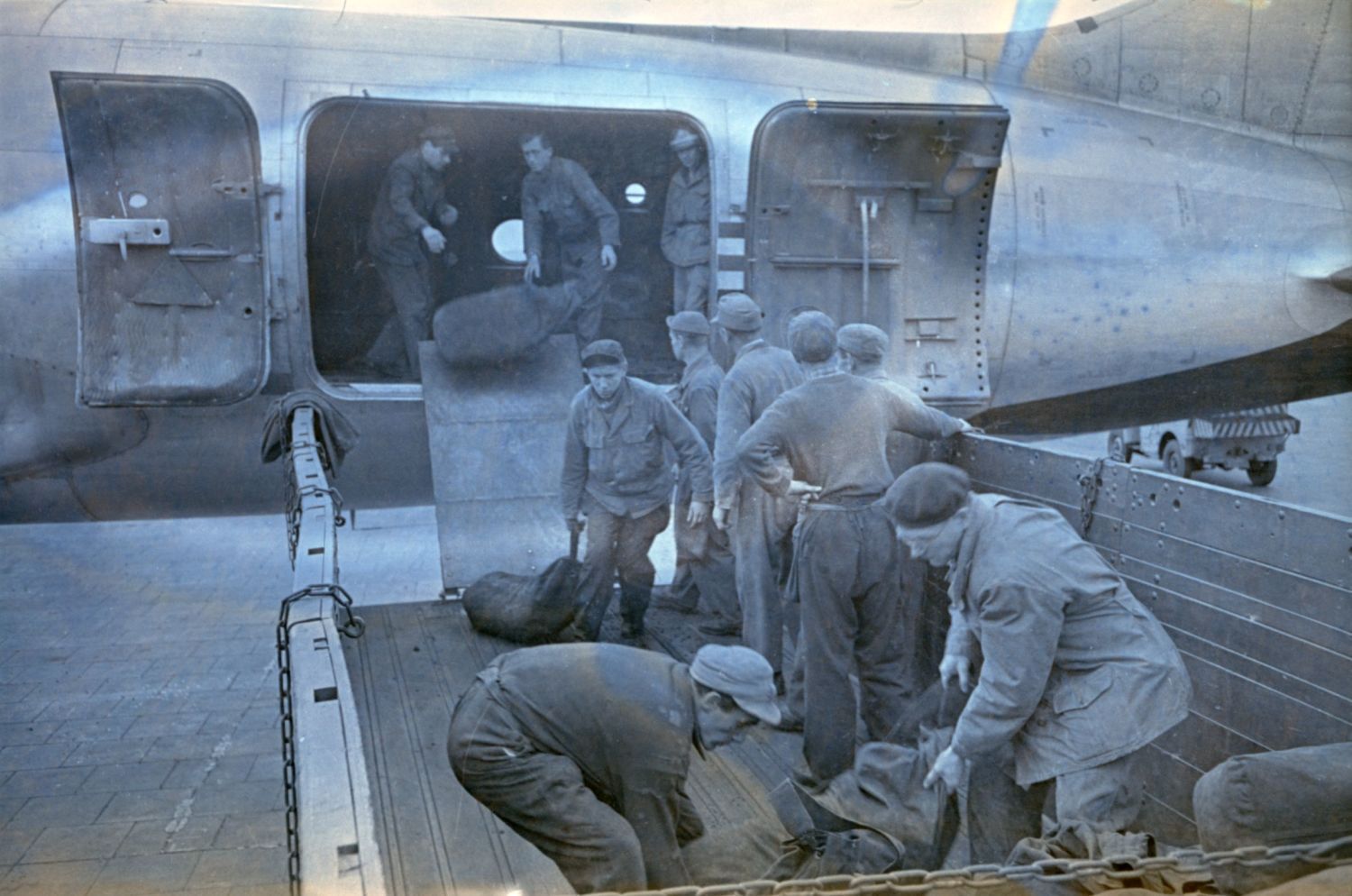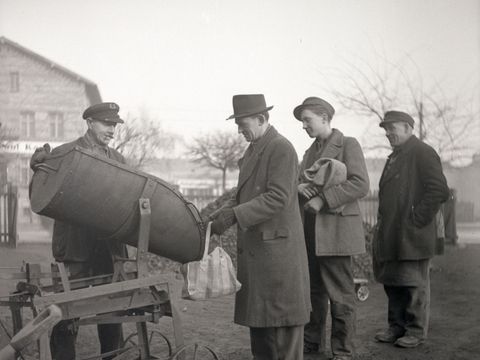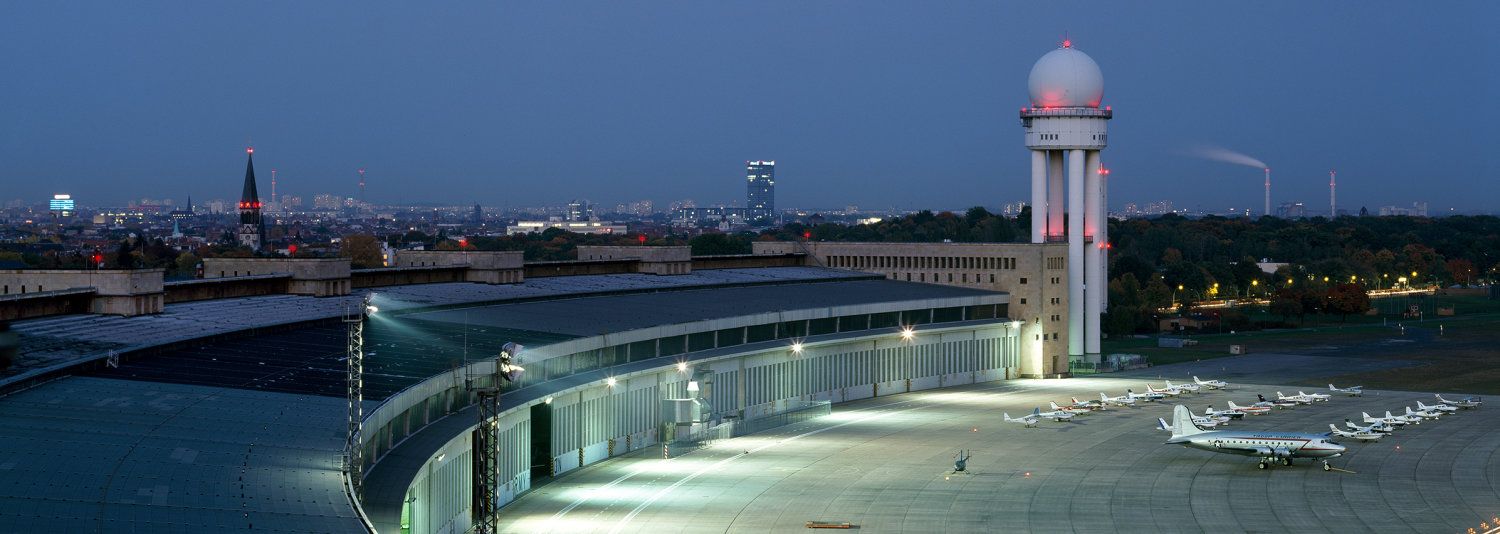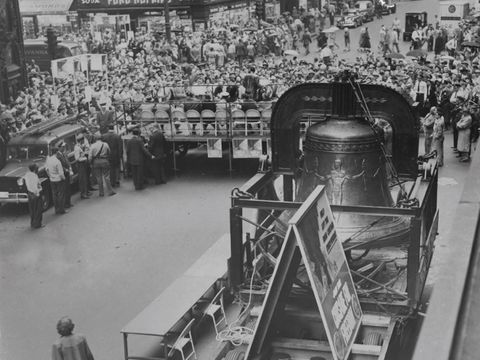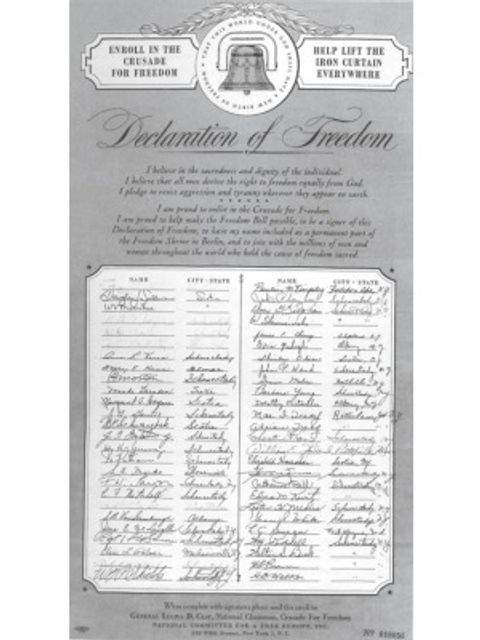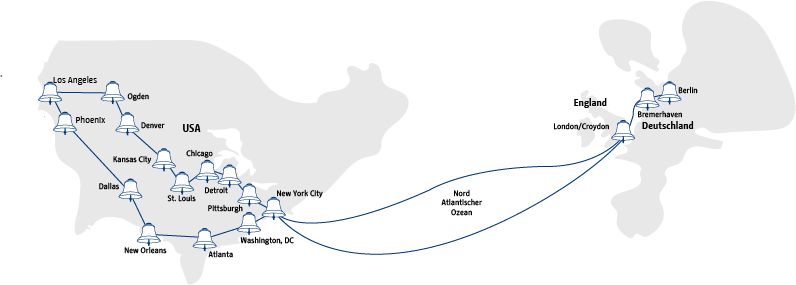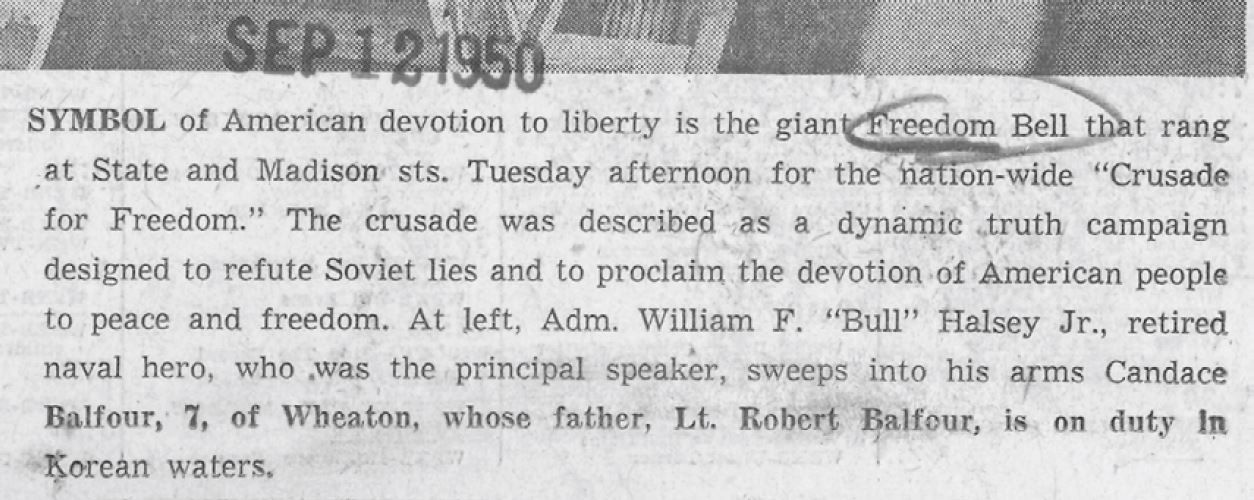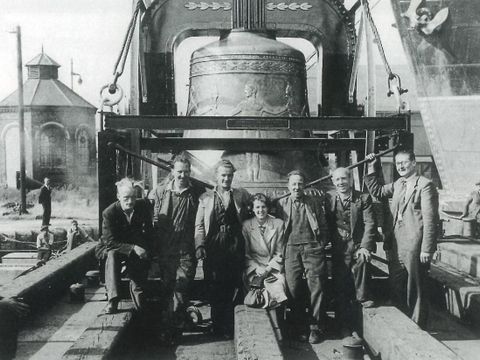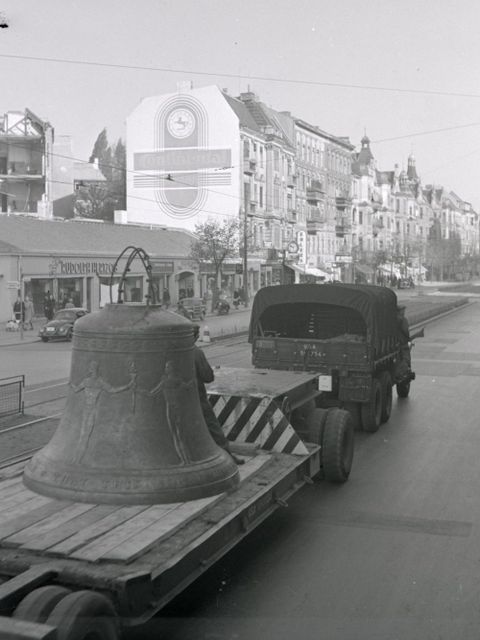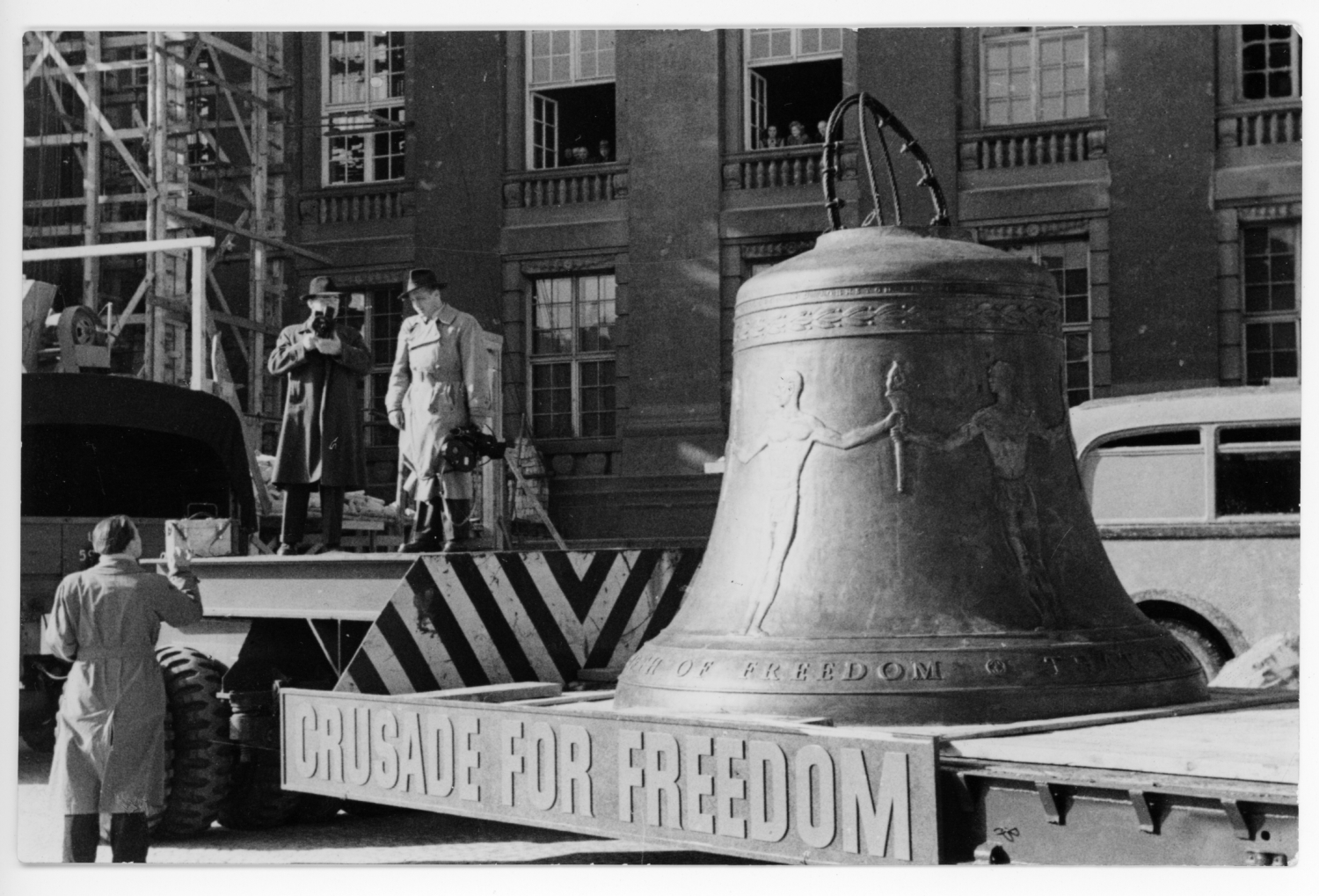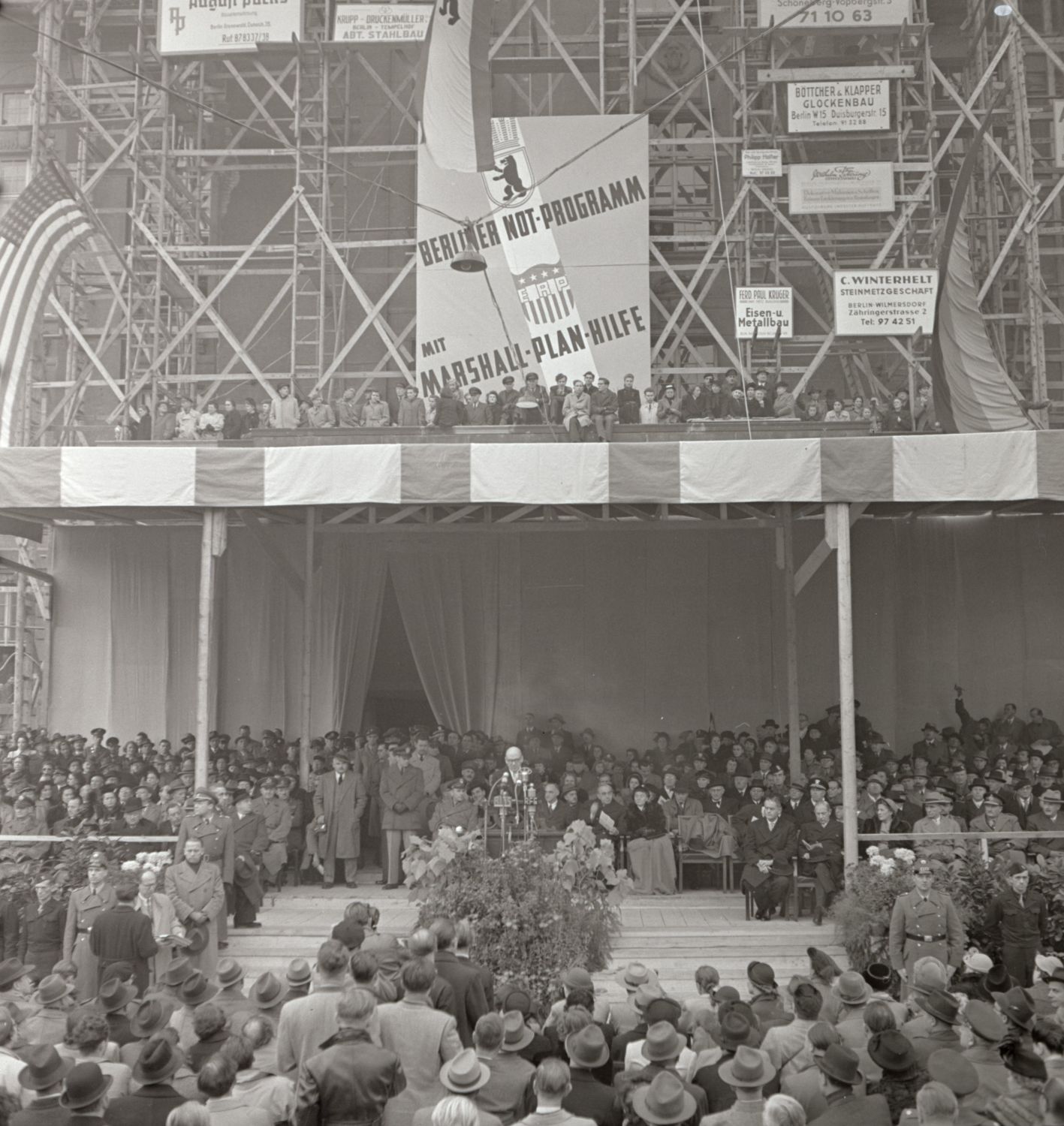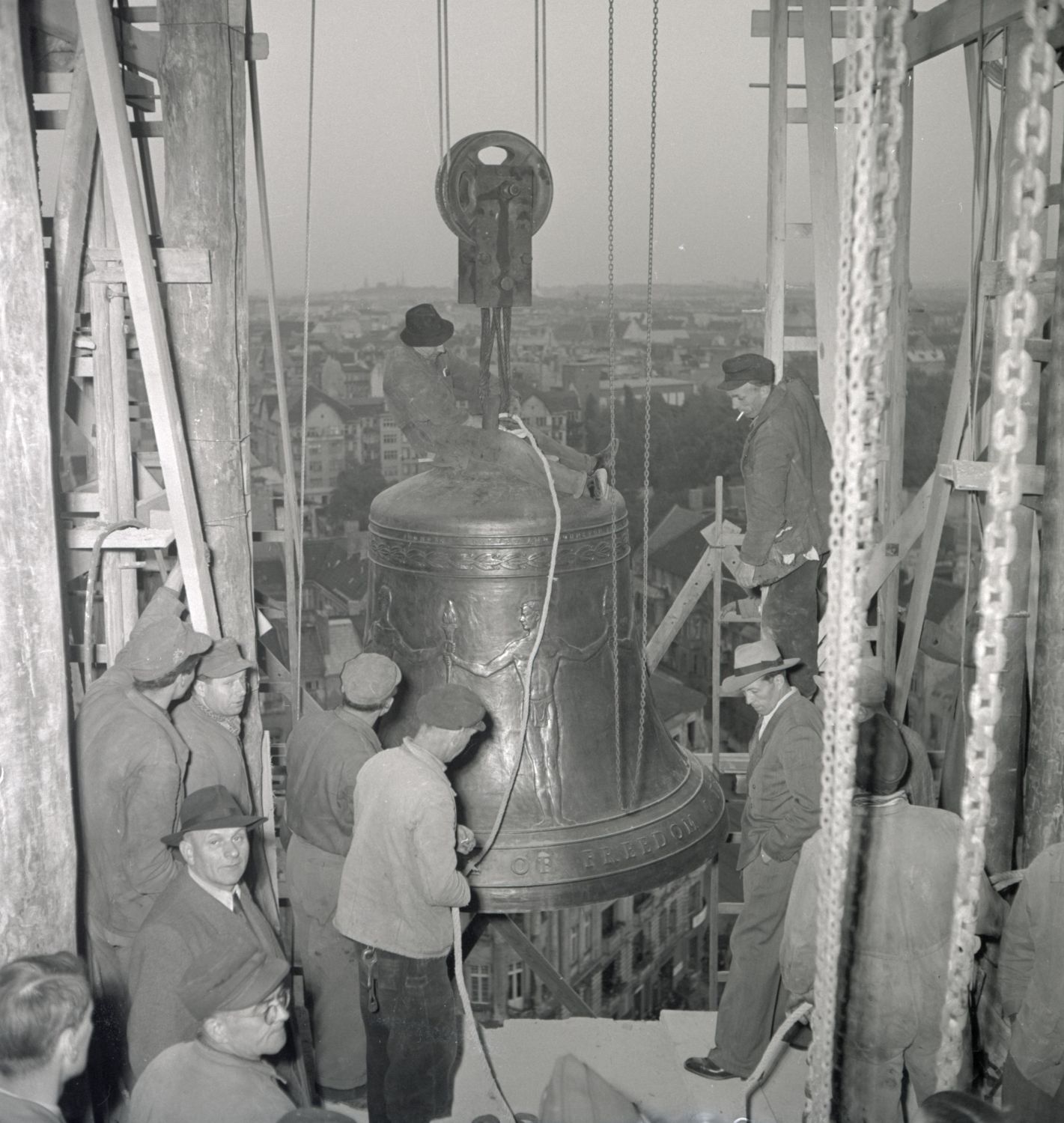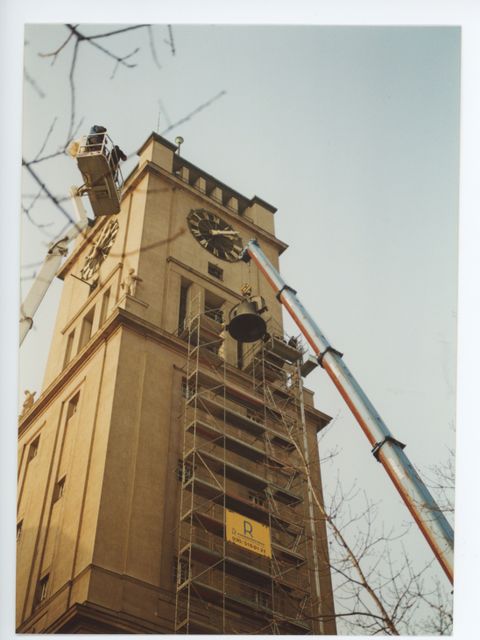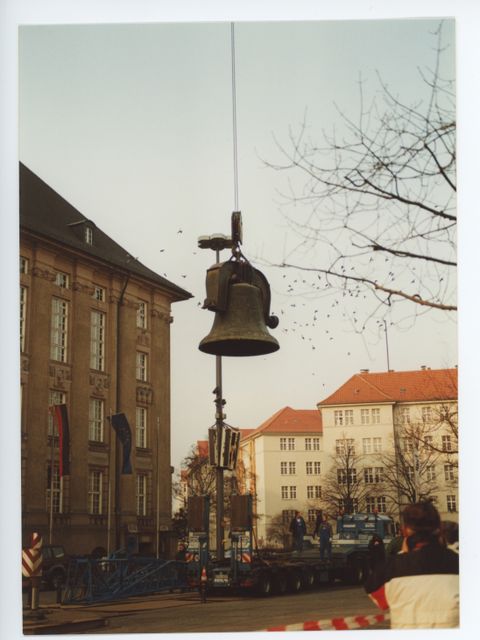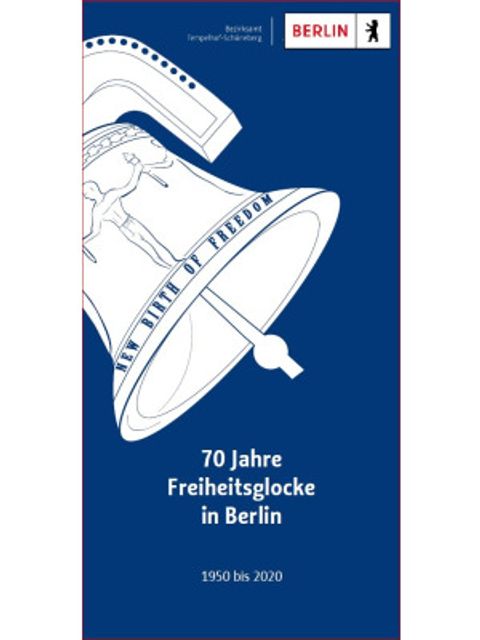Germany and especially its capital Berlin as the former centre of the Nazi dictatorship were confronted with the immense task of recovering from the war damages and rebuilding the architectural, societal and political structures after the end of the Second World War.
In 1945, about 2.8 million inhabitants still lived within the city area of the formerly four million people counting metropolis. During July and August of the same year, the four allied powers concluded the division and administration of Berlin according to the London Protocols.
70 Years of Liberty Bell in Berlin - The history of the Berlin Freedom Bell
An article from the brochure “70 Years of Liberty Bell in Berlin – 1950 to 2020”
from Andreas Baudisch
On 6th September 1948, the majority of Berlin city council‘ s delegates elected for the whole city moved to the western part of Berlin, after continuously being disrupted working by communist protesters throughout the first post-war years. In January 1949, the city hall of Schöneberg was selected to host the new city council of West- Berlin.
The text from a newspaper article dated 12th September 1950
bq. Symbol of American devotion to liberty is the giant Freedom Bell that rang at State and Madison sts. Tuesday afternoon for the nation-wide “Crusade for Freedom”. The crusade was described as a dynamic truth campaign designed to refute Soviet lies and to proclaim the devotion of American people to peace and freedom. At left, Adm. William F. “Bull” Halsey Jr., retired naval hero, who was the principal speaker, sweeps into his arms Candace Balfour, 7. of Wheaton, whose father, Lt. Robert Balfour, ist on duty in Korean waters.
Pictures from the ceremony of handing over the Freedom Bell

Pressestelle - Veranstaltungsmanagement
Frau Frömberg
- Tel.: (030) 90277-3497
Frau Siebenhaar
- Tel.: (030) 90277-3499


 Easy language
Easy language German Sign language
German Sign language